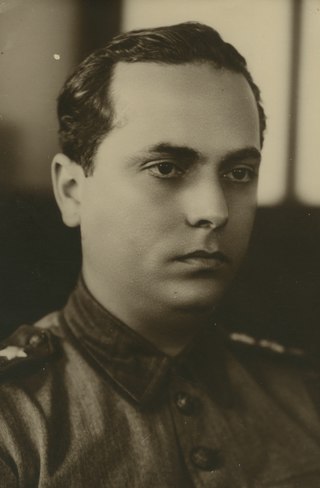
The Federal University of Minas Gerais is a federal research university located in the state of Minas Gerais. Its main and biggest campus is located in the city of Belo Horizonte, Brazil. It is one of Brazil's five largest and highest-ranked universities,. It offers 79 undergraduate education programs, upon completion of their curricular schedule the student is awarded either a bachelor's degree, a licenciate degree, or a professional title, all officialized by the issue of a university diploma. It also has 90 postgraduate education programs, awarding 30 postbaccalaureate specialization degrees, 92 master's degrees, and 72 doctoral degrees, as well as 41 medical residency programs offered at UFMG's hospital facilities complexes. The university also has campi at Tiradentes and Montes Claros. Most courses, however, are taught at the main campus, located in the Pampulha district of Belo Horizonte.

The Instituto Superior Técnico is the school of engineering and technology of the University of Lisbon. It was founded as an autonomous school in 1911, and was integrated into the Technical University of Lisbon in 1930. IST is the largest school of engineering in Portugal by number of enrolled students, faculty size, scientific production and patents.

The Federal University of Paraná is a public university headquartered in Curitiba, Paraná, Brazil. UFPR is considered to be one of the oldest universities in Brazil.

Polytechnic of Porto - School of Engineering (ISEP) is a public polytechnic higher learning and research engineering institute, located in the city of Porto, Portugal. ISEP is divided in 8 departments, with an emphasis on applied science and technology.

The Military Academy of Agulhas Negras is the biggest among several schools of formation of combatant officers of the Brazilian Army. It originated in 1792 with the creation of the Royal Academy of Artillery, Fortification and Drawing, the first military school of the Americas, in the city of Rio de Janeiro. Today the Academy is located in the city of Resende, in the state of Rio de Janeiro.

The Instituto Tecnológico de Aeronáutica is an institution of higher education maintained by the Brazilian Air Force and is located in São José dos Campos, Brazil. ITA is consistently ranked as one of the top engineering schools in Brazil and engages in advanced research in aerospace science and technology.

The Federal University of Itajubá, is a federal university located in the state of Minas Gerais, Brazil. It is considered the first technological university and one of top ten engineering schools in Brazil. Extremely reputable among Brazilian engineering schools, it carries more than 100 years of tradition in teaching, with emphasis on Electrical Engineering – which is one of the best research institutes on Power Systems field in Latin America – Mechanical Engineering, Environmental Engineering, Materials Engineering, Automation and Control engineering and Computer Engineering.
The Eastern Military Command is one of eight Military Commands of the Brazilian Army. The Eastern Military Command is responsible for the defence of the states Rio de Janeiro, Minas Gerais and Espírito Santo. A Parachutist Brigade and two Infantry Brigades are assigned to the 1st Army Division, which is the CMLs manoeuvre unit. Two Military Regional Commands are subordinated to the CML for administrative purposes.

The Federal Rural University of Rio de Janeiro is a public university located in Seropédica in the State of Rio de Janeiro, Brazil. It possesses the largest campus among Latin American universities and is known for being the first university to offer agriculture related courses in Brazil.

The Polytechnic School of Federal University of Rio de Janeiro, also called "Poli", founded in 1792, is the third oldest engineering school in the world and oldest in the Americas, with the Military Institute of Engineering being one of the first institutions of higher education in Brazil. It is considered one of the best institutions of Latin America in engineering education. It is located in the UFRJ Center of Technology (CT), in the Cidade Universitária, Rio de Janeiro.

Carlos Julião was a Luso-Italian artist and engineer of the Portuguese colonial army, working as a fortress inspector during the second half of the 18th century and beginning of the 19th century. He is more known for his watercolor drawings, portraying the different racial and social types inhabiting the Portuguese empire, as well as the period and methods of mining in Brazil.

Centro Universitário da FEI is a higher education facility in São Bernardo do Campo, Brazil, offering undergraduate degrees in engineering, business administration, and computer sciences as well as master's degrees in mechanical engineering, electrical engineering, and administration; specialization courses are also offered. It is often ranked among the best Brazilian private engineering colleges and best overall in mechanical engineering, electrical engineering, and computer science.
Antonio Luz Furtado is a Brazilian computer scientist and Professor of Computer Science known for his work in databases and conceptual modeling.

Francisca Fernández-Hall Zúñiga was a Guatemalan engineer and diplomat. She was the first woman to graduate from the Universidad de San Carlos de Guatemala, the first woman in all of Central America to earn an engineering degree, the first woman to be accepted and to attend the Instituto Militar de Engenharia of Brazil, and the first female ambassador for Guatemala.
Ângelo da Cunha Pinto was a Portuguese-Brazilian chemist and professor at the Federal University of Rio de Janeiro.
The Alberto Luiz Coimbra Institute for Graduate Studies and Research in Engineering, often referred to as Coppe due to its original name, is a research and learning center in the Center of Technology (CT) of the Federal University of Rio de Janeiro (UFRJ). It has over 2,500 students in its 13 graduate engineering programs.

Tarcísio Gomes de Freitas is a Brazilian engineer and politician who has served as Governor of São Paulo since 1 January 2023. A member of the Republicanos party, Freitas served Minister of Infrastructure under President Jair Bolsonaro from 1 January 2019 to 31 March 2022.

Antônio Guedes Muniz was the pioneer of the Brazilian aviation industry.















